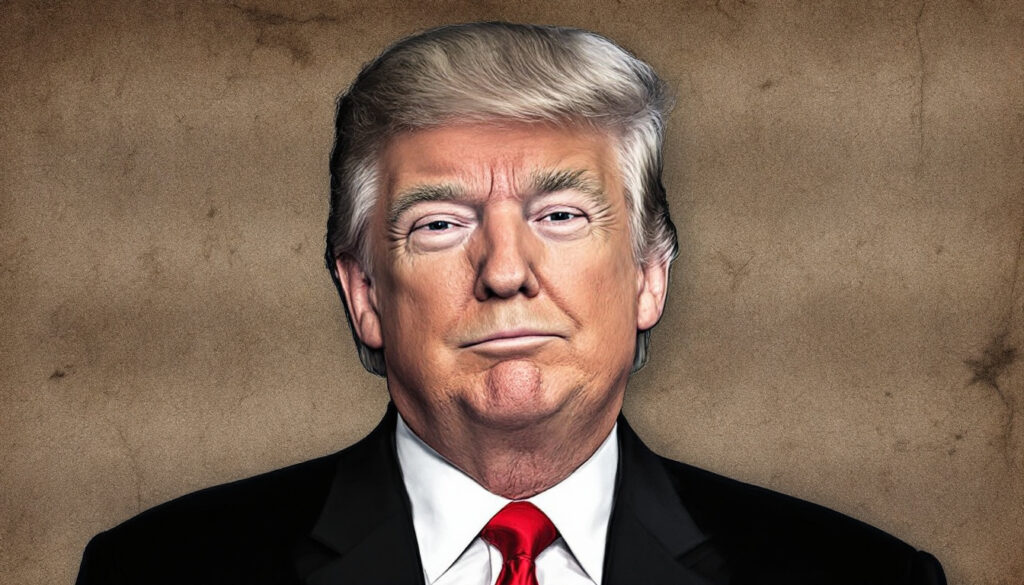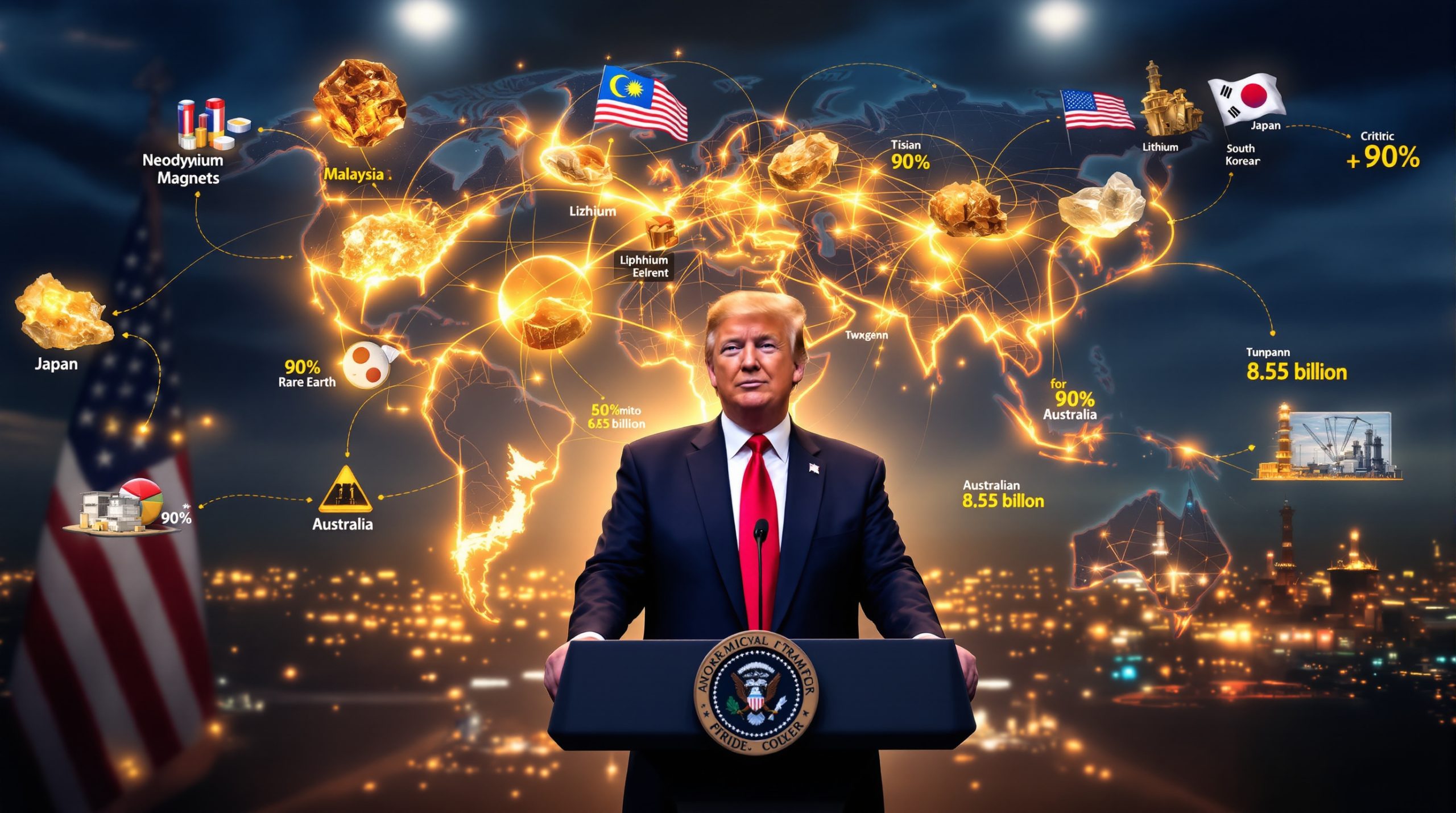Understanding Trump's Critical Metals Stockpiling Initiative
The Trump administration's planned executive order to enable the stockpiling of critical metals from the Pacific seabed marks a significant shift in U.S. resource strategy. This initiative, leveraging emergency powers under the Defense Production Act, aims to reduce reliance on foreign mineral imports—particularly from China—by tapping into polymetallic sea nodules rich in nickel, manganese, and cobalt. These minerals are vital for advanced technologies, defense systems, and renewable energy infrastructure, positioning the U.S. to secure its economic and national security interests. The move aligns with Trump's "America First" policies, prioritizing domestic resource development over international agreements. However, it raises environmental concerns about deep-sea mining and potential disruptions to global mineral markets amid the intensifying critical minerals race.
The Proposed Executive Order Details
The Trump administration is preparing an executive order to authorize the stockpiling of critical metals extracted from the Pacific seabed, building on previous efforts to invoke emergency powers for mineral production. This order forms part of a broader strategy to mitigate supply chain vulnerabilities by diversifying sources of essential minerals. By focusing on seabed resources, the U.S. seeks to bypass traditional mining challenges and geopolitical shift strategies associated with land-based deposits. The initiative also underscores the strategic importance of reducing dependency on China, which currently dominates global processing capacity for critical minerals like cobalt and rare earth elements.
Strategic Importance of Seabed Minerals
Polymetallic sea nodules, found in abundance on the Pacific seabed, contain high concentrations of nickel, manganese, and cobalt—minerals indispensable for battery production, aerospace engineering, and military hardware. For instance, cobalt is a critical component in lithium-ion batteries used in electric vehicles, while nickel enhances energy density and longevity. The Clarion-Clipperton Zone, a region spanning 4.5 million square kilometers between Hawaii and Mexico, holds an estimated 21 billion tons of these nodules, offering a transformative resource base for U.S. industries. Unlike terrestrial mining, seabed extraction avoids issues like deforestation and indigenous land disputes, though it introduces new ecological risks.
Why Is the U.S. Pursuing Critical Metals Stockpiling Now?
National Security Considerations
The Department of Defense has identified 35 minerals as critical to national security, citing their role in manufacturing weapons systems, communication devices, and energy infrastructure. Overreliance on foreign suppliers, particularly China, poses a strategic vulnerability; for example, China controls 60% of global rare earth element production and 80% of cobalt refining capacity. The 2025 National Defense Authorization Act emphasizes securing domestic supply chains for these materials, with seabed mining offering a viable alternative to contested land-based reserves in regions like the Democratic Republic of Congo.
Reducing China Dependency
China's monopoly over mineral processing has allowed it to wield economic leverage, as seen in its 2010 restriction of rare earth exports to Japan during a territorial dispute. The U.S. imports over 50% of its cobalt and 80% of its rare earth elements from China, creating vulnerabilities in sectors ranging from electric vehicles to missile guidance systems. By stockpiling seabed minerals, the Trump administration aims to insulate U.S. industries from such coercive tactics while fostering domestic refining capabilities. This approach mirrors policies from Trump's first term, including tariffs on Chinese goods and incentives for reshoring manufacturing.
How Does This Fit Into Trump's Broader Resource Strategy?
Use of Emergency Powers
Trump has repeatedly invoked the Defense Production Act (DPA) to accelerate critical mineral projects, bypassing lengthy environmental reviews and legislative hurdles. The DPA, enacted in 1950, grants the president authority to prioritize contracts for materials deemed essential to national defense. In March 2025, the administration used these powers to fast-track permits for lithium mining in Nevada and graphite processing in Texas, setting a precedent for seabed extraction. Critics argue that this strategy risks undermining environmental safeguards, while proponents highlight its necessity in countering China's strategic dominance.
America-First Resource Development
The stockpiling initiative aligns with Trump's emphasis on domestic self-sufficiency, contrasting with Biden-era policies that prioritized international partnerships like the Minerals Security Partnership. By focusing on seabed resources, the U.S. avoids reliance on unstable regimes and aligns with allies such as Japan and South Korea, which are investing in deep-sea mining technologies. This "America First" framework also aims to reduce trade deficits in strategic materials, which totaled $6 billion for rare earth elements in 2024 alone.
What Minerals Are Considered Critical for Stockpiling?
Key Strategic Metals
Nickel, manganese, and cobalt form the cornerstone of the stockpiling effort. Nickel demand is projected to grow by 400% by 2030 due to its role in electric vehicle batteries, while manganese is essential for high-strength steel used in infrastructure. Cobalt, despite its association with artisanal mining abuses in the Congo, remains irreplaceable in aerospace superalloys and renewable energy storage. The U.S. Geological Survey estimates that seabed nodules could supply 30% of global nickel demand and 25% of cobalt demand by 2035 if extraction scales efficiently.
Emerging Technology Requirements
Beyond traditional uses, these minerals are critical for next-generation technologies. Gallium and germanium, used in semiconductors, are vulnerable to supply disruptions, as evidenced by China's 2023 export controls. The stockpiling initiative also targets tellurium and indium, which are vital for solar panels and touchscreens, respectively. By securing these materials, the U.S. aims to maintain leadership in artificial intelligence, quantum computing, and 5G networks, which all require advanced digital transformation in mining to support production.
What Are the Environmental Implications?
Seabed Mining Concerns
Deep-sea mining poses significant ecological risks, including habitat destruction for abyssal species and sediment plumes that could smother marine life. The International Seabed Authority (ISA) has yet to finalize regulations for commercial extraction, leaving environmental protocols in limbo. Over 200 marine scientists have called for a moratorium on seabed mining until its impacts are fully understood, citing threats to biodiversity and carbon sequestration processes in ocean floors.
Balancing Security and Sustainability
The Trump administration contends that seabed mining could have a lower environmental footprint than land-based alternatives, particularly if conducted in sparsely populated oceanic regions. Advances in robotic extraction and nodule collection systems aim to minimize seafloor disturbance, though these technologies remain unproven at scale. The initiative also faces legal challenges under the United Nations Convention on the Law of the Sea (UNCLOS), which the U.S. has not ratified, complicating claims to international waters. Many stakeholders are watching how decarbonisation in mining might influence these projects.
How Will This Impact Global Mineral Markets?
Market Implications
U.S. stockpiling could destabilize global mineral prices, particularly if coordinated with allied nations. For example, a 10% increase in U.S. nickel reserves might reduce prices by 5–7%, affecting producers in Indonesia and the Philippines. Conversely, increased demand for seabed mining equipment could benefit companies like Lockheed Martin, which holds exploration licenses in the Clarion-Clipperton Zone. The initiative may also spur innovation in recycling technologies, as seen in the EU's Critical Raw Materials Act, which mandates that 15% of cobalt demand be met through recycling by 2030.
Industry Response
Mining giants such as DeepGreen Metals (now The Metals Company) and Nautilus Minerals are lobbying for regulatory clarity to expedite seabed projects. Meanwhile, automakers like Tesla and GM have expressed support for diversified supply chains but remain cautious about environmental reputational risks. The administration's focus on domestic processing could revive aging refineries in Pennsylvania and Ohio, potentially creating 15,000 jobs by 2030. Additionally, Africa's critical minerals partnerships might face challenges as the U.S. turns attention to oceanic resources.
FAQs About Critical Minerals Stockpiling
What are critical minerals?
Critical minerals are materials essential to economic and national security, often characterized by supply chain vulnerabilities or reliance on adversarial nations. The U.S. Department of Interior updates its critical minerals list every three years, with the 2025 list including 50 substances, from lithium to yttrium.
Why is the U.S. concerned about critical mineral supplies?
The U.S. imports over half of its critical minerals, leaving industries exposed to geopolitical risks. For instance, China's 2022 export restrictions on gallium disrupted semiconductor manufacturing, underscoring the need for diversified sources.
How does seabed mining differ from traditional mining?
Seabed mining extracts polymetallic nodules from ocean floors using remotely operated vehicles, avoiding the land displacement and water pollution associated with open-pit mines. However, it poses unique risks to marine ecosystems, including noise pollution and sediment dispersion.
What previous actions has the Trump administration taken on critical minerals?
In 2025, Trump signed an executive order to fund $2 billion in domestic mining projects and streamlined permitting processes under the National Environmental Policy Act (NEPA). These measures aim to reduce project approval times from 10 years to under 2 years, accelerating resource development.
Conclusion
The Trump administration's critical metals stockpiling initiative represents a bold attempt to recalibrate global resource dynamics in favor of U.S. interests. By prioritizing seabed mining and leveraging emergency powers, the U.S. seeks to mitigate supply chain risks and counter China's strategic dominance. However, this approach must balance economic and security objectives with environmental stewardship, requiring robust international cooperation and technological innovation. Future steps should include ratifying UNCLOS to strengthen jurisdictional claims and investing in circular economy models to reduce reliance on primary extraction. As the global race for critical minerals intensifies, the success of this initiative will hinge on its ability to harmonize security, sustainability, and market stability.
Want to Stay Ahead of the Next Major Mineral Discovery?
Discovery Alert's proprietary Discovery IQ model provides real-time notifications when significant mineral discoveries are announced on the ASX, giving you the market advantage other investors miss. Explore our dedicated discoveries page to see how historic mineral discoveries have generated substantial returns for early investors.




